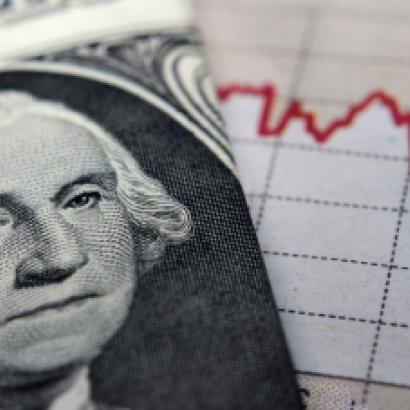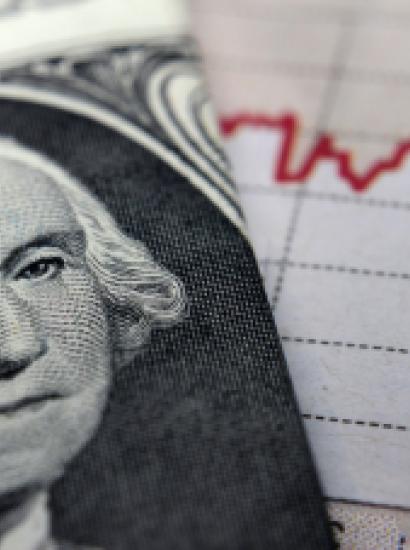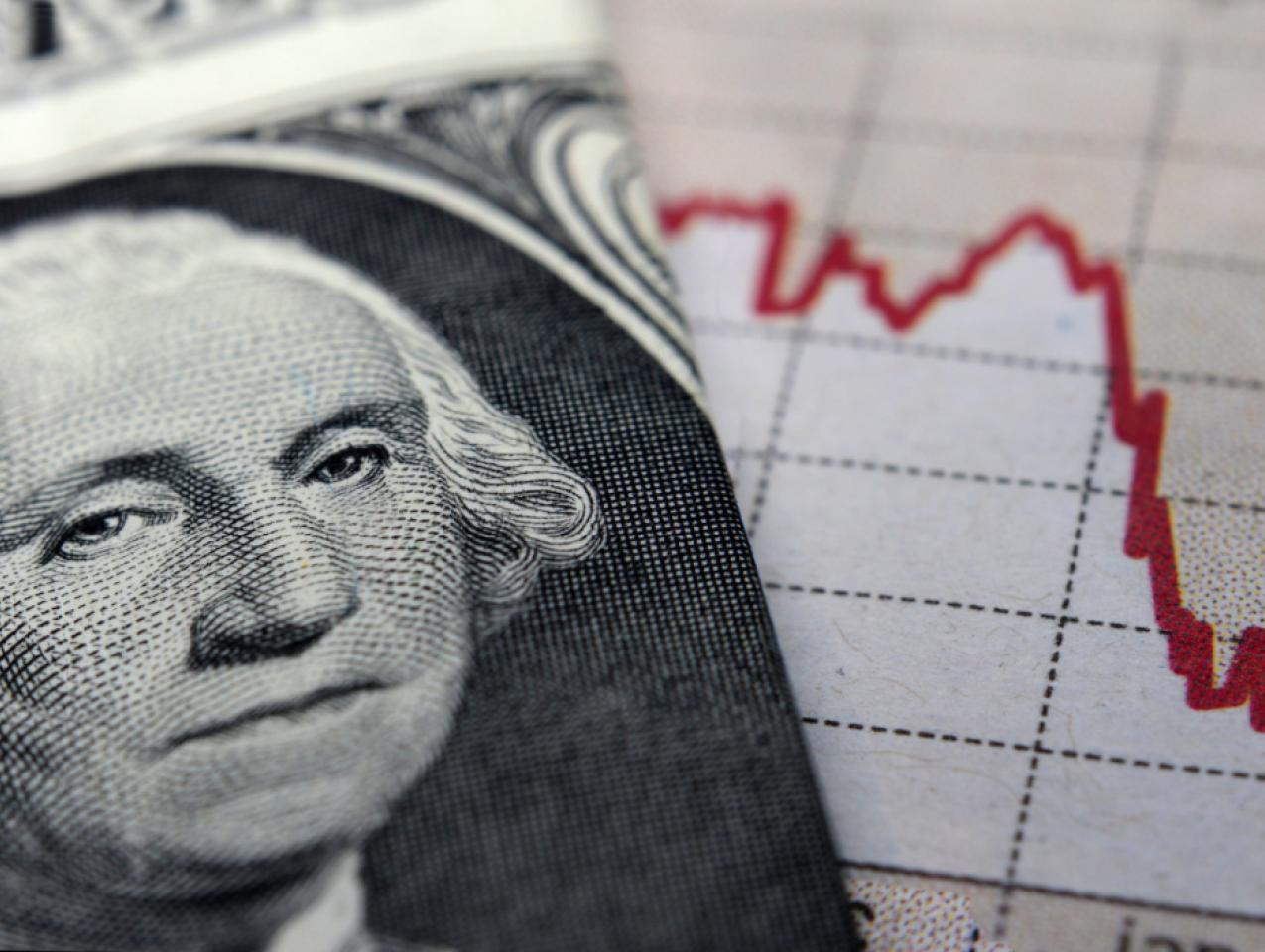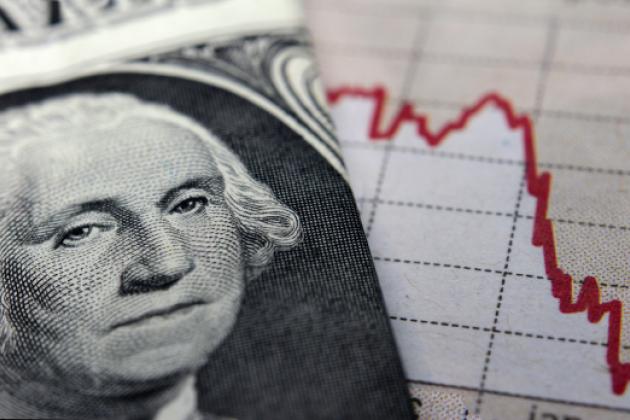- Economics
On August 7, the US Senate had a tie vote on the Inflation Reduction Act of 2022. Vice President Kamala Harris broke the tie, and the act now goes to the House of Representatives, which most observers predict will vote to approve the act.
The title given the act is a masterpiece of duplicity. It’s not about inflation at all, but instead is about raising taxes and spending more money on ObamaCare and green projects. It’s important, therefore, to consider the provisions of the act and their likely effects and not get fixated on inflation. The act will raise marginal tax rates on labor and capital, making the economy smaller than otherwise. It will do little to offset global warming. Moreover, it is a tragically missed opportunity to do something meaningful to reduce the growth of carbon dioxide emissions.
Will the Act Reduce Inflation?
Because of the act’s title, it is worthwhile to briefly consider its effect on inflation. One of the most important equations in macroeconomics is MV = Py. M is the supply of money; V is the velocity of money, which measures the rate of turnover of money; P is the price level, measured either as the Consumer Price Index or the Personal Consumption Expenditure Price Index; and y is the economy’s real gross domestic product.
One virtue of that simple equation is that it narrows the possible causes of increases in the price level to only three: (1) an increase in the money supply; (2) an increase in the velocity of money; or (3) a decrease in real GDP. The causation goes the other way also. If M falls, V falls, or y increases, then the price level falls.
It’s but a short step from this equation to considering what will raise or lower inflation. Since the act purports to be about reducing inflation, let’s consider the three changes that could reduce inflation. They are: (1) a reduction in the growth rate of the money supply; (2) a reduction in growth rate of velocity; or (3) an increase in the growth rate of real GDP.
Now we can consider the likely effect on inflation of the Inflation Reduction Act (IRA). Will the act cause the growth rate of the money supply to fall? Not likely. You might argue that because the act would cause the federal government’s debt to be slightly lower than otherwise, there would be slightly less pressure on the Federal Reserve to increase the money supply. That would be true if the act really did cause the debt to be slightly lower than otherwise. But it turns out, as you’ll see below, that the act could make the federal debt slightly higher than otherwise.
Will the act cause the velocity of money to grow more slowly. It’s hard to see how. Will it increase real growth of the economy? No. Because of its harmful effect on incentives to produce, it will do the opposite, which means that it would increase inflation.
Why the Act Will Reduce Growth
In “Biden Is Practically Engineering a Recession,” Wall Street Journal, June 23, 2022, University of Chicago economist Casey B. Mulligan and I pointed to various policy factors that could bring us closer to a recession. On one of the factors, we were too optimistic. We had written, “various federal health-insurance subsidies are about to expire. Letting them die will encourage work.” But one of the major provisions of the Inflation Reduction Act is a renewal of these subsidies.
In “The Negative Economic Effects of the Inflation Reduction Act of 2022,” an August 2022 analysis written for the Committee to Unleash Prosperity, my above-mentioned co-author explains why the renewal of the subsidies will reduce employment. Mulligan, who was chief economist with the White House Council of Economic Advisers from 2018 to 2019, notes that under the Affordable Care Act (ACA), people who buy health insurance on the ACA’s exchanges may qualify for substantial tax credits for the premiums they pay. But there’s a hitch: most full-time workers, regardless of how much or how little they earn, do not qualify for those tax credits. There’s a clear-cut way to qualify: quit being a full-time worker. Workers can do this either by quitting work altogether or by switching to part-time work. The tax credits effectively act as a tax on work.
Is that tax large? No, but it matters. Mulligan estimates that it is equivalent to raising the marginal tax rate on work by an average, over all workers, of 0.5 percentage point. Using an economic growth model that economists often use, he estimates the effect of that one provision alone to be a reduction in real GDP of 0.4 percentage points. So, for example, if over the next five years, real GDP would have grown by 9 percent, instead it would grow by 8.6 percent.
One tax provision that has received the most attention is the minimum 15 percent tax on corporations. Why should companies in the current 21 percent tax bracket worry about the 15 percent minimum? Aren’t they already paying at least 15 percent? No. The reason is that the 21 percent tax is on corporate income after deductions. But the 15 percent tax is on corporate income without some of those deductions. One major such deduction is for corporate investment. Under the tax law, companies can “expense” investments, taking a deduction for purchase of capital in the year that they made the purchase. But in their financial statements, they must depreciate the asset they purchased over the life of the asset. The 15 percent tax is applied to their income as reported on their financial statements rather than on their income minus completely legal deductions.
Ironically, this provision will hurt manufacturers. Democrats in recent years have claimed that they want to encourage manufacturing in the United States. But those tears for lost manufacturing have now shown themselves to be crocodile tears.
The net effect of this 15 percent minimum tax rate on so-called “book income” is to raise the tax rate on corporate income. Mulligan estimates that the effect will be to raise the average marginal tax rate on corporate income by 2.6 percentage points and to raise the average marginal tax rate on business income by 1.8 percentage points. (Not all business income is corporate income.) What happens when the government does that? It reduces the incentive to invest in capital. In the August 2022 study referenced above, Mulligan estimates that the corporate tax provisions, plus the expansion of the IRS, plus the elimination of the “carried interest” provision (which was dropped, after Mulligan’s study was complete, to get Arizona Senator Kyrsten Sinema’s vote) will make GDP half a percentage point lower than otherwise. Since the carried-interest provision is a small dollar item, and since it was replaced with a tax on corporate stock repurchases, the half percentage point is still a good estimate. That means that those provisions, plus the ACA tax credits, will make real GDP 0.9 percentage points lower than otherwise.
The Bottom Line on Inflation
With a real GDP that is 0.9 percentage points lower than otherwise, federal tax receipts will be lower than otherwise. It’s true that the tax provisions of the act will increase federal revenue. But the lower GDP will reduce federal tax revenue. The net effect is uncertain. That brings us back to the issue raised earlier. The one hope for the act to reduce inflation slightly was that the reduced federal debt would slightly reduce the pressure on the Federal Reserve to monetize some of the debt by printing more money. But because the net effect of the act will be at best a slightly lower federal debt and, possibly, a slightly higher federal debt, the effect on inflation would be minimal.
But recall that there’s another effect on inflation: the effect of lower real GDP growth. If the 0.9 percentage reduction in real GDP were to happen over, say, five years, that would amount to a 0.2 percentage point reduction in the annual growth rate over those five years. That, in turn, would make the inflation rate 0.2 percentage points higher in each of those five years. That effect is likely to swamp the very small effect of slightly lower federal debt. Net result: slightly higher inflation.
Effect on Taxpayers
Let’s not forget the effect of the tax measures on taxpayers.
Congress’s Joint Committee on Taxation estimated the increase in taxes for a previous version of the act that was very close to the one the Senate actually passed. It had to come up with some way to allocate the increase in corporate taxes. The JCT’s method, based on a large scholarly literature in economics, is to assume conservatively that 75 percent of the corporate income tax is paid by shareholders and 25 percent is paid by labor. In reality, probably more than 25 percent of the corporate income tax is shifted to labor.
People with income below $30,000 annually might take heart from the JCT’s estimate that their taxes will not rise. But a look at the JCT’s estimate of income should temper their optimism. Why? Because although one standard measure of income, when estimating tax burdens by income group, is adjusted gross income, the JCT’s measure of income is much more inclusive. It includes, for example, the amount that employers contribute to their employees’ health insurance, the employer’s portion of the Social Security tax, and the implicit value of the insurance that Medicare provides. That means that literally millions of households with JCT-measured income over $30,000 actually have adjusted gross income that is less than $30,000.
According to the JCT’s estimates, the average tax rate for households whose income is between $75,000 and $100,000 will rise from 15.8 percent to 16.0 percent. The rate for households with income between $100,000 and $200,000 will rise from 19.1 percent to 19.4 percent. For households with income between $200,000 and $500,000, the rate will rise from 24.1 percent to 24.4 percent. For households with even higher income, the rate will rise even more: from 28.5 percent to 29.0 percent for households in the $500,000 to $1 million bracket and from 30.2 percent to 30.8 percent for those above $1 million.
In short, for most people, taxes will grow.
The Benefits Are Uncertain
You might have noticed that I haven’t written anything about the benefits of the act. There’s a reason: a large part of the Inflation Reduction Act is simply a transfer of wealth from some people to others that does not create a net benefit. The ACA subsidies are a case in point.
But what about one of the main rationales for the act: the slowing of global warming? It turns out that the act will do little to reduce global warming. Bjorn Lomborg, president of the Copenhagen Consensus Center think tank, used the Rhodium Group’s estimates of how much the act would reduce carbon dioxide emissions. He then used the United Nations’ own climate model to estimate the effect on the world’s temperature by 2100. The results were underwhelming. At best, estimated Lomborg, the Inflation Reduction Act would cause the world’s temperature in 2100 to be 0.028 degrees Fahrenheit cooler; at worst, only 0.0009 degrees Fahrenheit cooler.
That’s a shame, because if their real concern had been global warming, the Senate Democrats could have had a bigger effect with a smaller cost. A basic principle in economics is that if you want to reduce a negative externality and you can’t get all the parties together, you tax the externality.
I’m skeptical of carbon taxes because I’m not convinced that taxing carbon is the least-cost way to address global warming. It might be better to wait until the world is warmer and use improved technology either to engage in geoengineering to reduce the world’s temperature or to adjust to higher temperatures. But if politicians are dead set on reducing carbon, the best way to do it is with a carbon tax. That way, they don’t put themselves in the position of central planners trying to decide which particular technologies to subsidize.
Consider one example: the subsidies to electric vehicles. Ignore the ironic fact that because of the domestic-content constraints the senators put on for those producers to qualify, few EVs would qualify for the subsidies. Even if all EVs did qualify, what are the odds that EVs are the way to go? Have the senators been outside lately where they would see electric bicycles whizzing by, bicycles that can be powered with a fraction of the coal or natural gas used to produce electricity for electric cars and trucks? Yet those bicycles will not get the subsidies. Nor should they. No one should get the subsidies.
And what about the hated N-word: nuclear? Nuclear power produces zero carbon emissions and is incredibly safe as well as being relatively expensive. But improved lower-cost technologies that are starting to appear in some states, combined with a tax on carbon production, might just make nuclear power the least-cost way of producing electricity in at least some parts of the country where non-nuclear electric power is relatively expensive.
We just don’t know. Neither do the Senate Democrats. The great virtue of a free market is that it can cause tens of thousands of people to pursue promising technologies and promising ways to reduce carbon at their own expense. The market leads to discovery. Politicians, by contrast, think they know “the” answer, and they’re always wrong.
I would rather that Congress not impose a carbon tax. But if it insists on “doing something” about increases in CO₂, a carbon tax would be much cheaper and much more effective. The misnamed Inflation Reduction Act is a shamefully missed opportunity to do something about global warming.

















